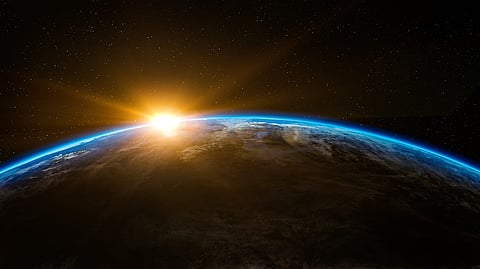Insight: The Potential Impact of the UAE Space Plan
The United Arab Emirates has major plans for the future of space travel, aiming to inspire a new generation of space explorers and scientists, as well as to revolutionize tourism and transport modes, and in this piece, we chart what these changes could look like.
The UAE already has some pedigree in the space travel arena after launching the Arab world’s first Mission to Mars in 2021, becoming only the fifth country to ever make it to the red planet.
Yet now the country wants to go to the next stage by implementing space tourism.
Recent reports revealed that Dubai is planning a US$5 billion space tourism experience and destination resort.
According to Moon World Resorts co-founders Sandra G. Matthews and Michael R. Henderson, “...Moon Dubai will be the largest and most successful modern-day tourism project within the entire MENA region, doubling annual tourism visitations to Dubai based on its global appeal, brand awareness and unique multiple integrated offerings."
They added that the project will “...significantly impact every aspect of the emirate’s economy including tourism, transportation, commercial and residential real estate, infrastructure, financial services, aviation and space, energy, MICE, agriculture, technology and of course education.”
Opportunities
The global space tourism market is expected to boom in the coming years, being worth almost $9 billion by 2030, according to ResearchAndMarkets.com.
Given the investments the UAE has made, it is likely to be a leader here, with offerings such a space travel and high-altitude balloon rides where passengers can see the vastness of space and the curvature of the Earth.
The UAE is also strategically well-placed to attract a global base of space fanatics.
This will likely mean that a future dimension of Dubai will see it as a space hub, attracting tourism, yes, but also scientists and engineers who are creating the new wave of transport offerings.
The UAE also has plans to explore the asteroid belt between Mars and Jupiter.
The new interplanetary mission was announced as part of the UAE’s “Projects of the 50”—a series of innovative projects to accelerate the UAE into its next 50 years—and will be developed in partnership with the Laboratory for Atmospheric and Space Physics (LASP) at CU Boulder.
Challenges
The main challenge here is going to be safety of tourists, an issue with special importance after the deaths of 5 people in a sub designed to view the wreckage of the Titanic.
In the disaster, the sub reportedly imploded, and major concerns have arisen regarding the safety of the sub in question.
This will act as a wake-up call for the 'extreme tourism' sector and likely see a new raft of regulations come in.
Other concerns include political issues, such as certain countries demanding a uniform approach to space travel due to fear of a militarisation of space, as well as sustainability issues and the problems of mega-constellations of satellites.
There exists a plethora of 'space junk' in the skies above after decades of launches both private and state-funded.
Read more: Ericsson, Qualcomm and Thales to Take 5G into Space


